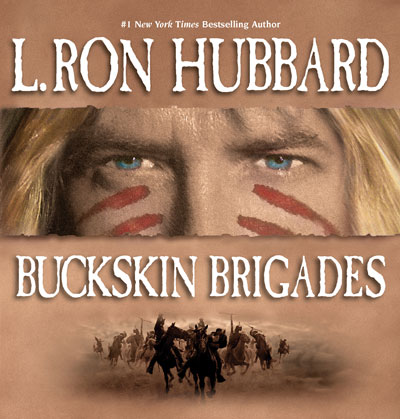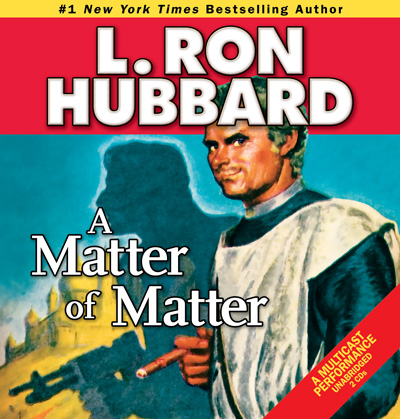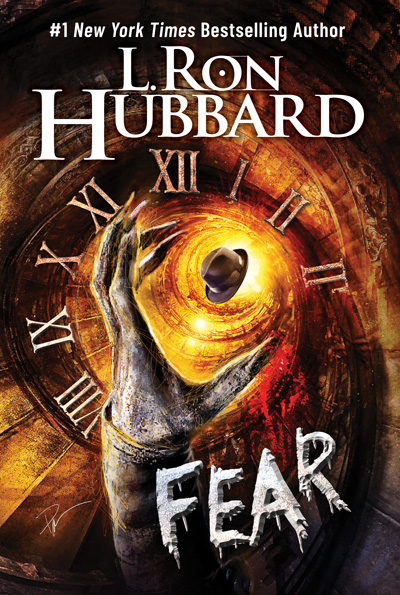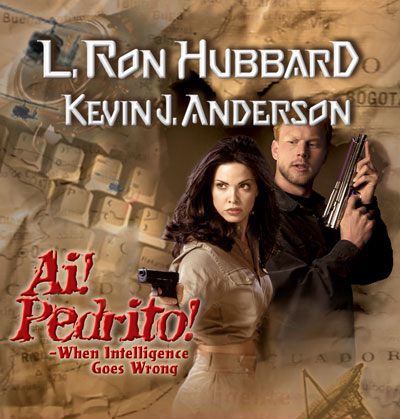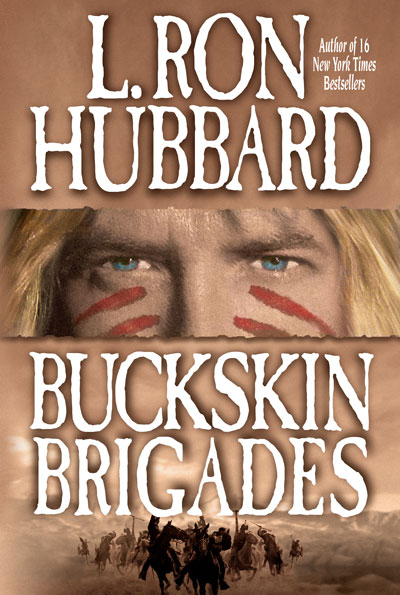Buckskin Brigades Glossary
Adams, John: (1735–1826) a lawyer by profession, he was a central figure in the American Revolution and one of the signatories of the Declaration of Independence (1776). He served as America’s first vice-president under George Washington (1789–1797) before being elected the second president of the United States (1797–1801).
Algonquian: a member of any of the North American Indian groups speaking an Algonquian language, including the Blackfoot, Cree, Arapaho, Cheyenne, Chippewa, Fox, Ottawa, Shawnee and others. They lived in most of the Canadian territory below the Hudson Bay and between the Atlantic and the Rocky Mountains. The term “Algonquian” means “a place for spearing fishes and eels.” Because Northern weather patterns made growing food difficult, the Algonquians moved their families from place to place to fish, hunt, trap and gather roots, seeds, wild rice and berries.
All Friends Society: one of the secret societies of the Blackfeet tribes; each society had its distinctive uniform and equipment, peculiar songs and dance and took charge of some special function at public gatherings.
American Fur Company: company founded in 1808 by John Jacob Astor in an effort to challenge the powerful Hudson’s Bay Company in Canada, which at the time dominated the fur trade in North America. After the War of 1812, the United States passed a law excluding foreign traders from operating on US territory; the American Fur Company grew to monopolize the fur trade in the US and became one of the largest businesses in the country.
Arnold, Benedict: (1741–1801) general in the Continental Army from 1775 to 1780, he fought on the side of the American cause in the American Revolution and was considered by many to be the best general and most accomplished leader of the army until he switched sides and joined the British. He fled to England where he continued a military career, but was widely scorned by the English. His name has become synonomous with “traitor.”
Astoria: Fort Astoria; established in 1810 by John Jacob Astor at the mouth of the Columbia River in Oregon as a fur-trading post in the Northwest and the first permanent US settlement on the Pacific coast.
Astor, John Jacob: (1763–1848) German immigrant; founded the American Fur Company, he built a fur-trading empire that extended to the Great Lakes and Canada, and later expanded into the American West and Pacific Coast. At the time of his death in 1848, Astor was the wealthiest person in the US.
bateau: (French) a shallow-draft, flat-bottomed boat, traditionally pointed at both ends. Used by the French explorers of North America, as the shallow draft worked well in rivers while its flatSultanm allowed heavy loading of cargoes and provided stability.
Bayazid the Thunderer: (1360–1403?) Sultan of the Ottoman Turks (1389–1402). In three years Bayazid conquered Bulgaria and parts of Serbia and Macedonia; he also subdued the greater part of Asia Minor. He blockaded Constantinople (present-day Istanbul) for ten years, hoping to subdue it by famine. Bayazid was finally defeated by Timur the Limper in 1402 in the battle of Ankara (capital of Turkey).
Beadle: Beadle and Company (later Beadle and Adams); publishers of inexpensive, short paperback novels. Stories about the West were one of the popular subjects for Beadle’s writers and readers.
Beaver Roll: medicine bundle; a wrapped package of items used by some Native Americans for religious or ceremonial purposes. The most powerful medicine roll among the Blackfeet was the Beaver Roll which was used to charm the buffalo and assist in the planting of the sacred tobacco used in the medicine pipe rituals. The Blackfeet believed the life of the land and their own lives were irrevocably bound, and an animal’s power or the power of a natural element would frequently be bestowed upon an individual in a dream. The animal, often appearing in human form, provided the dreamer with a list of the objects, songs and rituals necessary to use this power. The dreamer gathered the indicated items and placed them into a pouch which served as the sacred medicine bundle.
Blackfeet: native North Americans living below the Canadian border in Montana. Mostly of Pikuni descent, they are part of the Blackfoot Indians which consist of the Siksika (which means “Black Foot”), the Kaina (“Bloods”), the Pikuni (“Spotted Robes”), located in Canada, and the Pikuni of Northern Montana. In the early nineteenth century they occupied a large range of territory stretching from the North Saskatchewan River in Canada to the Missouri River in Montana and west to the Rockies. The Blackfoot Indians were quick to resent and avenge insult or wrong, but were powerful and loyal allies when their friendship was won. They were greatly feared by early trappers and settlers because of the vigor with which they defended their hereditary hunting grounds from encroachment.
bois-brûlé: (French) “charred wood” or “burnt wood”; a nineteenth-century term for a mixed-blood native, especially the descendant of a native and a French Canadian. The expression referred to the brownish skin color of these people.
Boundary Settlement: part of the Treaty of Paris signed on September 3, 1783, between the American colonies and Great Britain, which ended the American Revolution and formally recognized the United States as an independent nation. Included in the treaty was a settlement of the boundaries between British North America (what is now Canada) and the United States.
brigade: a convoy of canoes, sleds, wagons or pack animals, especially as used to supply trappers in the eighteenth- and nineteenth-century Canadian and US fur trade.
Broken Mountains: the Sweet Grass Hills located on the plains of north central Montana which consist of three distinct butte complexes with scattered grassy hills connecting them. The buttes rise nearly 3,000 feet above the surrounding plains; they served as a vantage point for game and as a lookout for enemies trespassing in Blackfeet territory.
canister: a metallic cylinder packed with small cast-iron balls that scatter upon discharge from a cannon.
Cathay: China; the Anglicized version of “Catai,” it was originally the name used for Northern China during Marco Polo’s time. Marco Polo popularized the word in his book Travels in the Land of Kublai Khan in a story called “The Road to Cathay.”
chagateurs: members of a divided fourteenth-century Mongol dynasty which was reunited by Timur the Limper. The chagateur (jagatai) warriors were descendents of Genghis Khan’s grandson, Jagatai. Under the leadership of Timur, the chagateurs embarked on vast conquests across Central Asia and created an empire that stretched from China on the east to Turkey on the west.
charter: Hudson’s Bay Company charter, signed by King Charles II in 1670 which granted HBC a monopoly over the Indian trade, especially the fur trade, in the region watered by all rivers and streams flowing in the Hudson Bay in northern Canada, an area covering 1.5 million square miles (2.4 million square km).
chinook: a warm, dry wind descending from the eastern slopes of the Rocky Mountains, causing a rapid rise in temperature. These winds often melt snow quite rapidly, at times at a rate of up to a foot per hour.
clan: a subdivision of the Blackfoot tribes, tracing common descent in the male line. There were around fifty Blackfoot clans known as Black-Elks, Lone-Fighters, Many Children, White-Breasts, etc. Each tribe was led by a council of chiefs, one from each clan. The Blackfoot people valued harmony, so every chief had to agree on a decision before action could be taken.
Clark: William Clark (1770–1838), an American explorer who accompanied Meriwether Lewis on the Lewis and Clark Expedition.
complacence: a feeling of calm satisfaction with one’s own abilities or situation that prevents one from trying harder.
coulee: a deep ravine or gulch, usually dry, that has been formed by running water.
coup: the act of striking or touching an enemy in warfare with the hand or at close quarters, as with a short stick, in such a manner as by custom to entitle the doer to count the deed an act of bravery; any of various other deeds recognized as acts of bravery or honor. Among the Blackfeet the capture of a shield, bow, gun, war bonnet, war shirt or medicine pipe was deemed a coup. Coups were recorded by notches in the coup stick or by feathers in the headdress of a warrior who was rewarded for an act of bravery.
coup stick: a long slender branch used by a warrior to touch an enemy to prove his bravery, rather than shooting him from a long distance, as such an action put the warrior at great risk. Coups were acts of bravery and were also recorded by notches in the coup stick.
coureur du bois: an individual who engaged in the fur trade without permission from the French authorities. The term literally means “runner of the woods.” Later a limited number of permits were issued to coureurs du bois who became known as voyageurs.
Cree: the largest Indian tribe of Canada, and one of the largest north of Mexico, their territory spanned from the Rocky Mountains all the way to the Atlantic Ocean. “Cree” comes from the French name for the tribe “Kistenaux,” variously said to be a corruption of the French word for “Christian” or the Algonquian word for “first people.”
Crows: a Native American people formerly inhabiting Yellowstone River valley in Montana. The original name of the tribe is “Apsáalooke” which means “children of the large-beaked bird,” which was later interpreted as “Crow.”
De de Meurons: member of the Swiss regiment that served under the British from 1795 until it was disbanded in 1816. Charles-Daniel de Meuron was a captain in the French Regiment des Gardes Suisses when he was promoted to colonel and command of the regiment which served the British in South Africa and India as well as lower Canada.
Deschamps: half-breed of French and Native American descent. In the 1600s, a few thousand Frenchmen immigrated to Canada. Some moved westward, living off the land as hunters and trappers and marrying local Native American women. After several generations, there grew in the Northwest a large population of French-Indian half-breeds, or Metis, as they were more commonly called, all sharing a small number of French surnames. In order to distinguish between various branches of these large “families,” the practice of adding a descriptive clan name after the surname developed. “Deschamps” is a clan name meaning literally “of the fields,” which is descriptive of where this clan lived.
Digger: Digger Indians; a member of any of several Native American peoples of western North America, especially a tribe that dug roots for food. Used as a disparaging term.
Drewyer: George Drouillard (1773–1810), referred to in the journals of Lewis Meriwether by the phonetic spelling “Drewyer,” was hired as a translator of Indian languages for the Lewis and Clark expedition.
dudgeon, high: a feeling of intense indignation.
eye-dog: a type of hatchet that traders used to exchange with the Indians.
factor: chief of a trading post or trading party, authorized by the company to sell or trade company merchandise.
factory: trading post established for the purpose of enhancing trade between Native Americans and European colonists, and later, the United States. The head of the factory was called a factor. Factories, also called posts or forts, played a strategic role as well, providing a degree of protection for Native Americans and allied colonists.
Falling Leaf Moon: one of the Native American names for the month of October.
Fields: brothers Joseph Field (ca. 1780–1807) and Reubin Field (ca. 1781–1822) who were part of the Lewis and Clark expedition. Although referred to in the journals of Lewis as “Fields,” their surname was Field. Joseph and his brother were the primary hunters in the expedition.
Forks: the junction of the Red and Assiniboine rivers, in the region that later became Winnipeg. In 1805 the North West Company established a post there named Fort Gibraltar.
Fort Chesterfield: trading post established at the mouth of the Red Deer River where it enters the South Saskatchewan River.
Fort de Prairie: fort established in 1795; located on the North Saskatchewan River, it was a trading post for the Hudson’s Bay Company from 1795 to 1891.
Fort Gibraltar: trading post built in 1805 by John MacDonald of Garth for the North West Company. It was located at the junction of the Red and Assiniboine rivers, in the region that later became Winnipeg. He named it Gibraltar, “though there was not a rock or stone within three miles.”
Fort William: located on the Thunder Bay inlet of Lake Superior, at the mouth of the Kaministiquia River, the fort was built by the North West Company in 1801 to serve as its western headquarters. After 1803, it was the yearly rendezvous point for the North West Company wintering partners to bring in the furs that had been collected during the past season and to meet with the Montreal agents who served as the company financiers, wholesalers and suppliers.
Genghis Khan: (1162?–1227) Mongol conqueror who founded the largest land empire in history and whose armies, known for their use of terror, conquered many territories and slaughtered the populations of entire cities.
ghost-head: a skull.
grape: a cluster of small cast-iron balls formerly used as a charge for a cannon.
Grass Moon: one of the Native American names for the month of April, so called due to the time of the year when life would come back into the ground after the winter snows.
Great Slave: Great Slave Lake; located in the southern part of the Northwest Territories, Canada.
Great Spirit: the principal deity in the religion of many Native American peoples.
gunwale: the upper edge of the side of a boat. Originally a gunwale was a platform where guns were mounted, and was designed to accommodate the additional stresses imposed by the artillery being used.
halyard: a rope used for raising and lowering a sail.
hand: a linear measure equal to four inches, used especially in determining the height of horses. An average horse is about fifteen to sixteen hands high, so a horse that stood twenty-five hands would be enormous.
HBC: Hudson’s Bay Company.
Hell-Gate: gateway through the Rockies to the plains, located near Missoula, Montana. So named because it was in this gorge that the warlike Blackfeet Indians waylaid and ambushed other Indian tribes and interlopers to keep them from infringing upon their buffalo hunting territory.
Henley House: a small outpost erected in 1743 for the Hudson’s Bay Company on the Albany River in Ontario, Canada, 124 miles (200 km) from the Hudson Bay coast.
high wine: an alcoholic beverage containing a high percentage of alcohol.
howitzers: cannons which have comparatively short barrels, used especially for firing shells at a high angle of elevation for a short range, as for reaching a target behind cover or in a trench.
Hudson Bay: a large inland sea in the northeast of Canada. On the east it is connected with the Atlantic Ocean by Hudson Strait and on the north with the Arctic Ocean. The bay was explored by (1610) and named for Henry Hudson in his search for the Northwest Passage. In 1670 the Hudson’s Bay Company (HBC) was granted a charter by King Charles II which gave them exclusive rights to all land and trade in the area. HBC set up several forts and trading posts along the coast and at the mouth of major rivers to facilitate their fur trading activities, as the fur pelts could be transported directly to Europe via Hudson Strait. The HBC continued to use these posts until the beginning of the twentieth century.
Hudson’s Bay Company: HBC; chartered in 1670, it is the oldest commercial corporation in North America and one of the oldest in the world. With its charter, King Charles II of England granted the HBC an exclusive right to trade in the territory known as Rupert’s Land which comprised 1.5 million square miles (2.4 million square km) and encompassed all the land that was drained by rivers flowing into Hudson Bay, roughly 40 percent of present-day Canada. In 1870 the HBC gave up its rights in Rupert’s Land, selling them to the Canadian government.
jackstaff: a flagstaff at the bow of a vessel.
Kaministiquia: a river 60 miles long (100 km) rising in Dog Lake, in west Ontario, Canada, and flowing south and then east into Lake Superior at Thunder Bay. The name comes from a native word meaning “(river) with islands” due to two large islands at the mouth of the river. It became the main route used by the North West Company to reach Fort William, their western headquarters, located at the mouth of the river.
King Charles II: (1630–1685) King of England, Scotland and Ireland (1660–1685); on May 2, 1670, Charles signed the Hudson’s Bay Company charter, naming his cousin Rupert as “true lord and proprietor” of the Hudson Bay, an expanse of land covering 1.5 million square miles (2.4 million square km). The charter granted to the “Governor and Company of Adventurers of England Trading into Hudson’s Bay” ownership of the land (and animals and people) and a monopoly over the trade to and from all lands drained by the Hudson’s Bay.
Kitchi-Mokan: Native American name for a white man, specifically, name given to Americans preceding and following the American Revolution to distinguish them from the French and the English. The word comes from the native term “kitchimokkuman” which means “big knife,” probably from the swords of the soldiers.
Kit-Fox Society: one of the secret societies of the Blackfoot tribes. Along with the Society of the Horns, they were considered to have the strongest medicine and be among the most honorable and exclusive. Each society had its distinctive uniform and equipment, peculiar secret and sacred ceremonies, and took charge of some special function at public gatherings.
Lake of the Woods: a lake in the southwest province of Ontario, Canada, bordering west on the province of Manitoba, and south on the state of Minnesota.
lanthorn: lanterns, as lanterns formerly had sides made of translucent sheets of horn.
laudanum: an opium-based painkiller and sedative.
Lewis, Captain Meriwether: (1774–1809) American explorer; served in the army and attained the rank of captain in 1797. Under President Jefferson, Lewis and his companion William Clark were the first explorers to reach the Pacific by crossing the continent north of Mexico. On the return journey, in March 1806, the expedition split up; Lewis, with one party, explored the Marias River, and Clark with another the Yellowstone.
Lone-Fighters: one of the clans of the Pikuni tribe. Each tribe was subdivided into clans and led by a council of chiefs, one from each clan. The Blackfoot people valued harmony, so every chief had to agree on a decision before action could be taken.
Lords of the Outer Marches: a variation of the title “Lords of the Marches.” In medieval times, a knight or a lord who was given lands on the borders of the kingdom was bestowed the rank of Lord of the Marches (“The Marches” is the historical name for the borderlands between England and Scotland, and England and Wales). These knights were charged with patrolling and defending these wildlands, the Marches, and thus protecting the heartland. They were both the first line of defense and the secure fortifications from which civilization could expand and as such had the powers of martial law and the ability to raise an army in their own right. The term is used figuratively in the story with reference to the “Outer Marches,” that is, lands beyond or outside the borders of a country.
Louisiana Purchase: territory of the western United States extending from the Mississippi River to the Rocky Mountains between the Gulf of Mexico and the Canadian border. It was purchased from France on April 30, 1803, for fifteen million dollars and officially explored by the Lewis and Clark expedition (1804–1806).
Mackinaw: a boat approximately forty feet long, ten feet across the beam and four feet deep, pointed at both ends. This boat was capable of holding a cargo of approximately ten tons.
Mandans: Native Americans that lived in villages along the Missouri River in North Dakota. They were farmers and hunted buffalo. In October 1804 members of the Lewis and Clark expedition encountered the Mandans.
Marias River: tributary of the Missouri River, approximately 210 miles long, in the state of Montana. The river was named by Meriwether Lewis after his cousin, Maria Wood.
Minnetarees: one of the four branches of the Sioux, or Dakota, Indians. The Minnetaree group lived in Minnesota.
Missouri Fur Company: fur trading company that operated from 1807 to 1820 on the Upper Missouri and relied on the Indian tribes to bring their buffalo skins to trading posts. There the robes were bought and sent to St. Louis via the river.
Nelson: Nelson River in central Canada, flowing northeast from Lake Winnipeg to Hudson Bay, 400 miles (645 km) long. York Factory was situated on the mouth of the Nelson River on the Hudson Bay.
Northwest Fur Company: North West Company, also known as Nor’West or Nor’Westers; fur trading company established in 1783 by merchants in Montreal, Canada. Many of the Nor’Westers were former coureurs de bois (French for “wood runners”, unlicensed traders during the French regime in Canada) who were unemployed after the French lost their colonies in North America to Britain in 1763, while others were immigrants from Scotland who came to join the fur trade. The Nor’Westers were bitter rivals of the HBC and by the 1800s the two sides were at war with each other.
Orkneymen: immigrants from the Orkney Islands, off the north coast of Scotland. Orkneymen played a major role in the exploration and settlement of Canada’s Northwest in the eighteenth and nineteenth centuries. The majority came as laborers and boatmen for the HBC. At the peak of their involvement with the HBC in 1800, Orkneymen comprised 80 percent of a labor force of almost 500.
outhouse: outbuilding; a small building situated at a little distance from the main building.
palisades: a number of stakes pointed at the top and set firmly in the ground in a close row with others to form a defense.
partner: a wintering partner; an inland fur trader and shareholder, most notably in the North West Company. The wintering partners were part owners in the company and lived year round in the interior, supervising the trade in the districts assigned to them. It was the partner’s responsibility to choose the post site, develop new transport routes, to entice Native Americans to trade and to get the men under his command to render a profitable return on their time. Elected only from clerks trained as apprentice traders, partners were considered the key to the company’s geographic and commercial expansion. This system of management was adopted by rival firms such as the XY Company, the Pacific Fur Company and the Hudson’s Bay Company.
Pays d’en Haut: (French) up country or upper country; an expression used in the fur trade to describe the areas beyond the settlements on the St. Lawrence River. In the seventeenth and eighteenth centuries, Pays d’en Haut usually referred to the Great Lakes area or inhabitants from that region.
Pembina: situated at the confluence of the Red and Pembina rivers in the northeastern corner of North Dakota. The name comes from a combination of two Native American words: “Pam,” meaning “all around,” and “Bian,” meaning “a place of meeting,” as for over two hundred years Pembina was the natural place where Native Americans and hunters assembled before starting to the prairies on buffalo hunts. In 1797 the North West Company built a trading post on the west side of the Red River, near the mouth of the Pembina, which was named Fort Panbian.
pemmican: a high-energy food developed by Native Americans which was easily transported and lasted for many months. Made from lean dried meat that was pounded into a powder, it was mixed with melted fat in a ratio of 50 percent meat to 50 percent fat. To this was often added dried fruits. It created a high-calorie, high-nutrition food for travelers. The pemmican was packed into buffalo-hide sacks weighing ninety pounds each. The bags were sent to posts along the central waterways where they could be picked up by the voyageurs. Four such sacks could carry the voyageurs about 500 miles to the next post where they could pick up their next ration.
penny-a-liner: a mediocre writer paid to churn out sensational, lower-quality fiction stories.
Pikuni: one of the tribes of the Blackfoot Indians. “Pikuni” derives from the native term which means “spotted robes.”
Planting Moon: one of the Native American names for May, so called as it was the time of the year when planting occurred.
popinjay: a vain and conceited person.
portage: to carry boats or cargo across land from one waterway to another or around an unnavigable section of a waterway.
Portage of the Rat: overland crossing at the northern end of Lake of the Woods that put voyageurs on the Winnipeg River, considered by many as the point at which they crossed into the West. The name was a rough translation from a native term which meant “portage to the country of the muskrats.”
pot au beurre: (French) tub of butter. Name given to the prison for voyageurs at Fort William.
powder horn: an animal’s horn capped at the open end, used to carry gunpowder.
Punch: the chief male character of the Punch and Judy puppet show, a famous English comedy dating back to England in the seventeenth century, by way of France from Italy. It is performed using hand puppets in a tent-style puppet theater with a cloth backdrop and board in front. The puppeteer introduces the puppets from beneath the board so that they are essentially popping up to the stage area of the theater.
punk: substance that smolders when ignited; used to light fuses.
Red Death, Scourge of the: smallpox.
Red Moon: one of the Native American names for August, so called because as the moon rises, it appears reddish through any sultry haze.
red sickness: smallpox.
régale: (French) choice article of food or drink; great feast.
Rocky Mountain Fur Company: an American fur trading company organized in St. Louis in 1823. Unlike the other fur companies, the Rocky Mountain Fur Company did not build forts or trading houses as their men, called “mountain men,” worked independently. Every summer the mountain men, Indian trappers and traders would gather at a “rendezvous” to trade the pelts. It was a chance to relax and enjoy themselves after a long season in the mountains. They gambled and drank and danced. It became a giant pow-wow, a carnival and a circus all rolled into one. The company operated until 1833.
Sand Hills: a barren, sandy region south of the Saskatchewan where the Blackfeet believed their spirits went to when they died. Here, as shadows, their ghosts lived a life much like their existence before death, but all was unreal. Riding on shadow horses they hunted shadow buffalo and lived in shadow camps.
Saskatchewan: Saskatchewan River, a major river in Canada, approximately 340 miles (550 km) long, flowing roughly eastward to Lake Winnipeg. It is formed by the junction of the North Saskatchewan and South Saskatchewan rivers. The name of the river comes from the Cree Indian word meaning “swift flowing river.”
Shining Mountains: the Rocky Mountains; range of mountains in western North America which stretch 3,000 miles from British Columbia, Canada south to the Rio Grande in New Mexico.
Sioux: a common name for the Dakota people, a tribe of Native Americans inhabiting the northern Great Plains from Minnesota to eastern Montana and from southern Saskatchewan to Nebraska. Dakota is a native word which means “ally.” Sioux is from a French word which means “treacherous snakes.” The Sioux are famed as warriors and frequently took up arms to oppose the settlement of their hunting grounds and sacred places.
sits-beside-him woman: in a plural marriage, the Blackfoot Indian’s first wife; she is invested with authority over all the other wives, directs their work and looks after the comfort of her husband. Her place in the lodge is on his right-hand side and she has special privileges. She might, at times, take part in the conversation of her husband and his guests, and she might, during informal meetings, even smoke the pipe when it was passed in her lodge.
Snakes: the Shoshone Indians; also known as the Snake Indians, as they were mostly located around the Snake River in Idaho. The Shoshone were the first of the northern tribes to obtain horses from the Spaniards. Horses gave them a distinct advantage over their neighboring tribes. They expanded their territory far to the north, even into what is now Canada, pushing back their enemies, the Blackfeet. When the Blackfeet acquired guns, they drove the Shoshone back to the area where Lewis and Clark found them in 1805.
societies: different organizations, some of which were secret, within the Blackfoot tribes. Most of these were military in character, consisting of several orders of various rank, from boys in training to the retired veterans who acted as advisors and directors of the rites. Each of these orders had its distinctive uniform and equipment, songs and dance and took charge of some special function at public gatherings. The All Friends Society was one of these organizations. The Kit-Fox Society and Society of the Horns were considered to have the strongest medicine and were among the most honorable and exclusive of these societies.
Society of the Horns: one of the secret societies of the Blackfoot tribes. Along with the Kit-Fox Society, they were considered to have the strongest medicine and be among the most honorable and exclusive. Each society had its distinctive uniform and equipment, peculiar secret and sacred ceremonies, and took charge of some special function at public gatherings.
South Saskatchewan: major river in Canada (865 miles/1392 km) that flows through the provinces of Alberta and Saskatchewan. The river joins the North Saskatchewan River east of Prince Albert at the Saskatchewan River Forks, thus forming the Saskatchewan River.
Spotted Robes: Pikuni, one of the tribes of the Blackfoot Indians.
Thames: a river of southern England flowing eastward to a wide estuary on the North Sea. Navigable for large ships as far as London, it is the principal commercial waterway of the country.
Thompson, David: (1770–1857) an English-Canadian fur trader, surveyor and mapmaker, known to some native peoples as “Koo-Koo-Sint” or “the Stargazer.” During his career he traveled 55,000 miles and mapped over 2.4 million square miles (3.9 million square kilometers) of North America and for this has been described as the “greatest land geographer who ever lived.”
three-point blanket: a blanket with three small stripes (“points”) woven into one border to signify the value of the blanket. Each “point” stripe represented one good, full-size beaver skin, thus a three-point blanket would be traded for three beaver pelts.
Three Tribes: reference to the three divisions that make up the Blackfoot Indians. They are the Siksika (which means “Black Foot”), the Kaina (“Bloods” in reference to the ochre spread on their clothes) and the Pikuni (“Spotted Robes”).
Thunder Moon: one of the Native American names for July, so called because thunderstorms were most frequent during this time.
Timur the Limper: a name for Timur Lenk or Tamerlane (meaning “Timur the Lame”). Timur was a Mongol conqueror (1336–1405). The name is supposed to have reflected the battle wounds he received. He claimed to be a descendant of Genghis Khan.
Toledo: city located in central Spain, famed for its production of steel, especially of swords. It is a center for the manufacture of knives and other steel implements.
touchholes: the vents in the breeches of early firearms or cannons through which the charge was ignited.
trace dog: a dog used to pull a sled or another form of carrier by means of a trace (straps or chains by which an animal pulls a vehicle).
Tushepaws: Flathead Indians located in western Montana on the Flathead River.
Union Jack: the national flag of the United Kingdom of Great Britain and Northern Ireland.
voyageur: a boatman, woodsman, trapper or explorer formerly hired by fur companies to carry furs and supplies from one remote station to another, especially in Canada and the Northwestern US.
wassail: a salutation wishing health to a person, used in England in early times when presenting a cup of drink or when drinking to the person.
White-Breasts Clan: one of the clans of the Pikuni tribe. Each tribe was subdivided into clans and led by a council of chiefs, one from each clan. The Blackfoot people valued harmony, so every chief had to agree on a decision before action could be taken.
wolf: a Pikuni scout.
XY: XY Company; formed by disgruntled Nor’Westers in 1798 to compete directly against the North West Company. The XY Company merged with the North West Company in 1804. Known as the “XY Company” because of the mark they used on their bales of furs.
York Factory: between 1684 and its closing 273 years later in 1957, York Factory, located on the southwestern shore of Hudson Bay, served as a trading post, distribution point and administrative center for a vast network of fur posts throughout the West. York Factory quickly became the HBC’s single most important trading post on the Bay as all goods going into the West and all furs coming out of the interior passed through there, and until 1774 the volume of trade there exceeded that of all the other Bay posts. After 1774, as the HBC expanded its operations inland, York Factory still remained the principal transportation depot.

